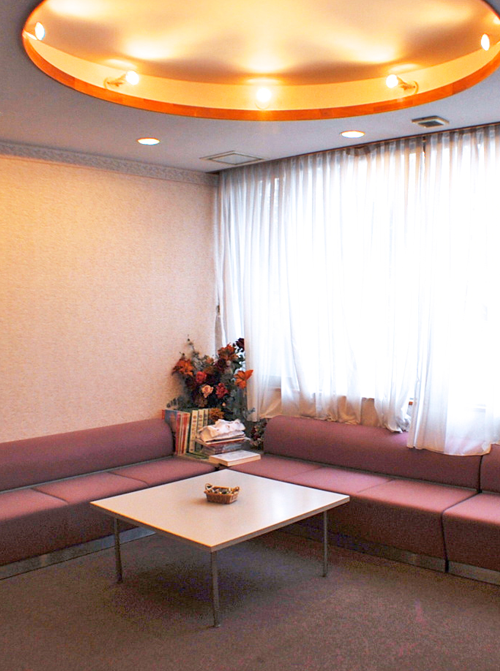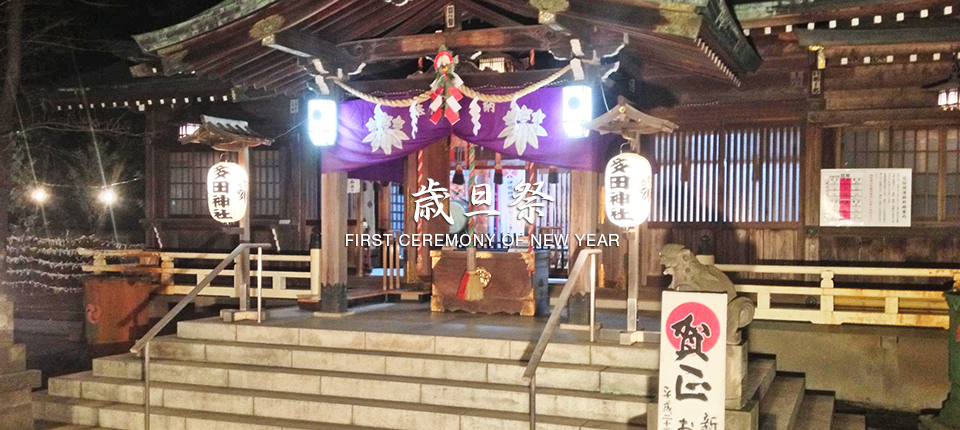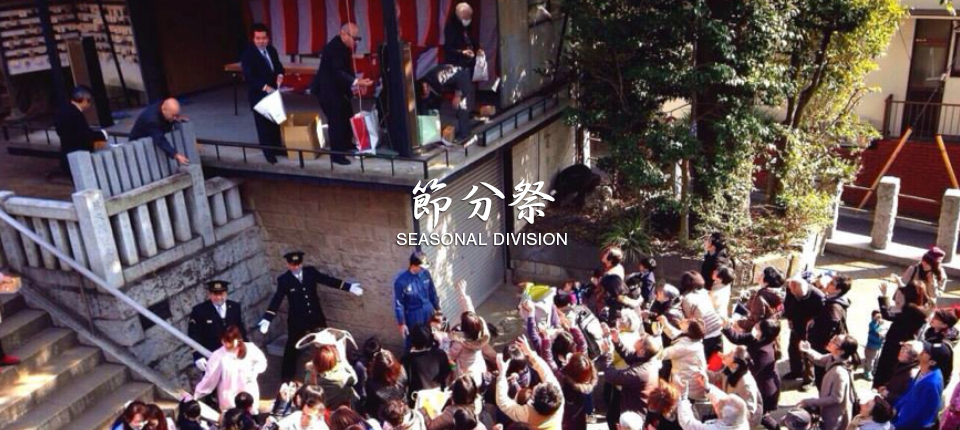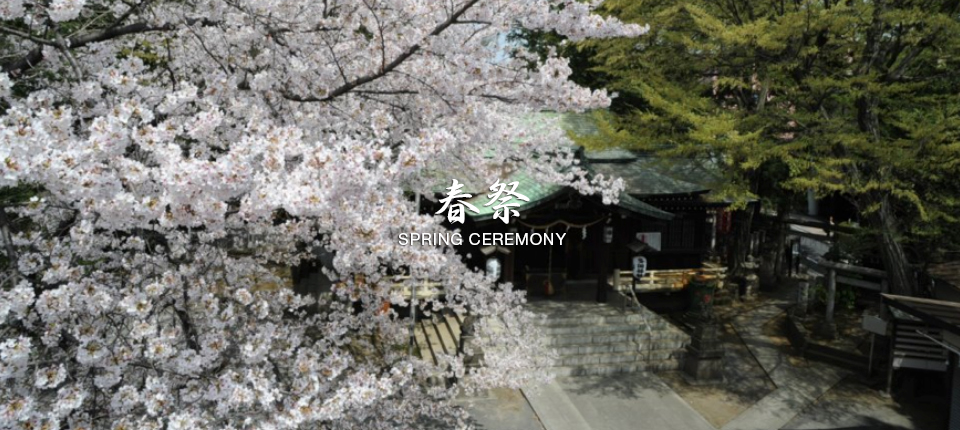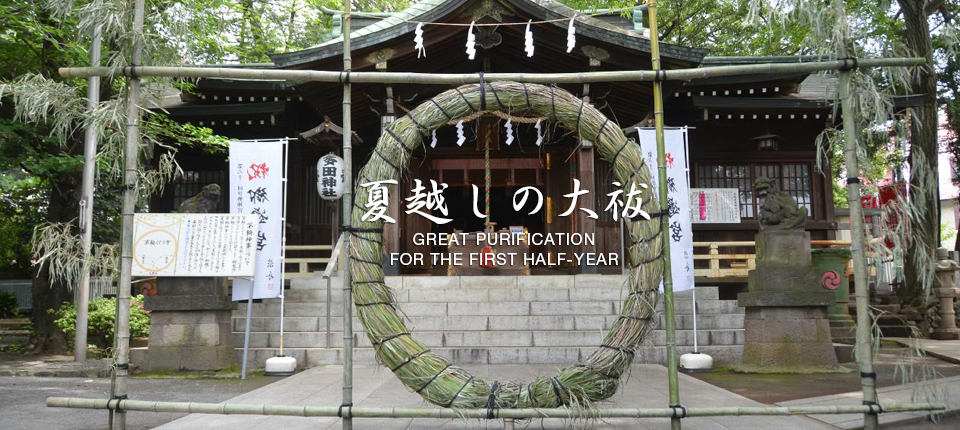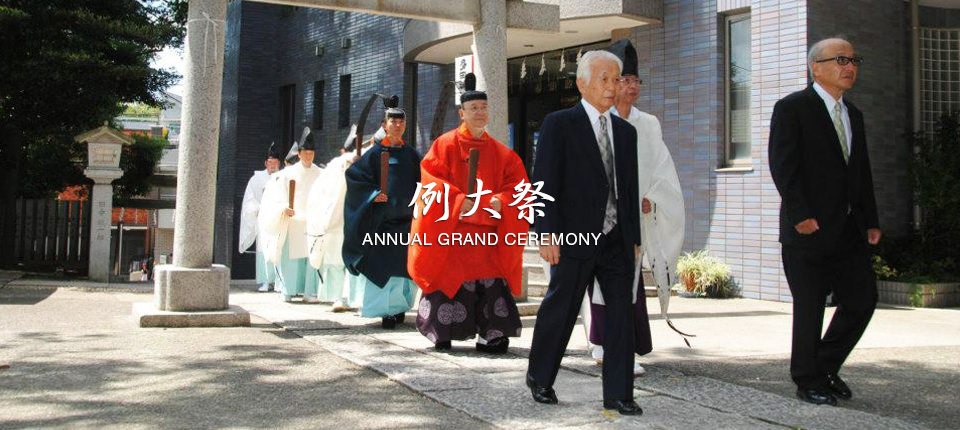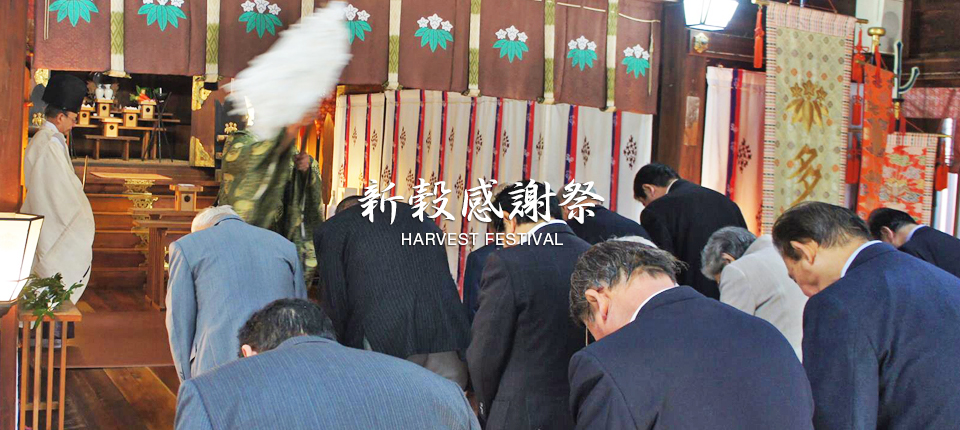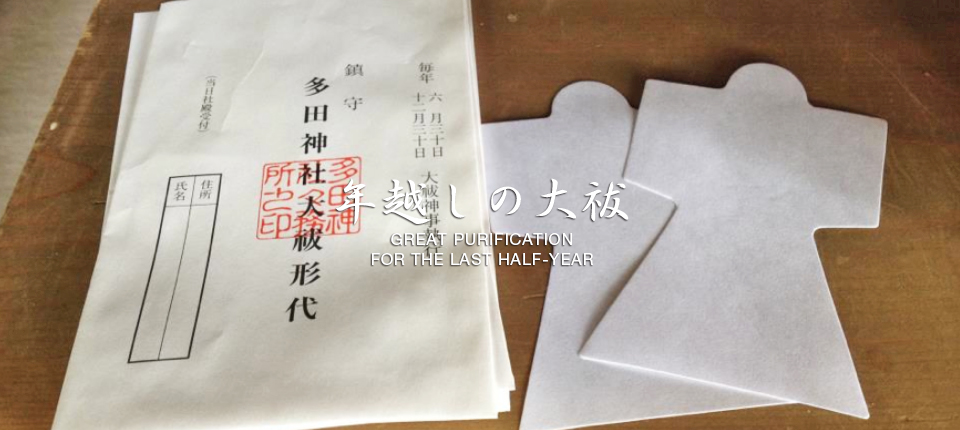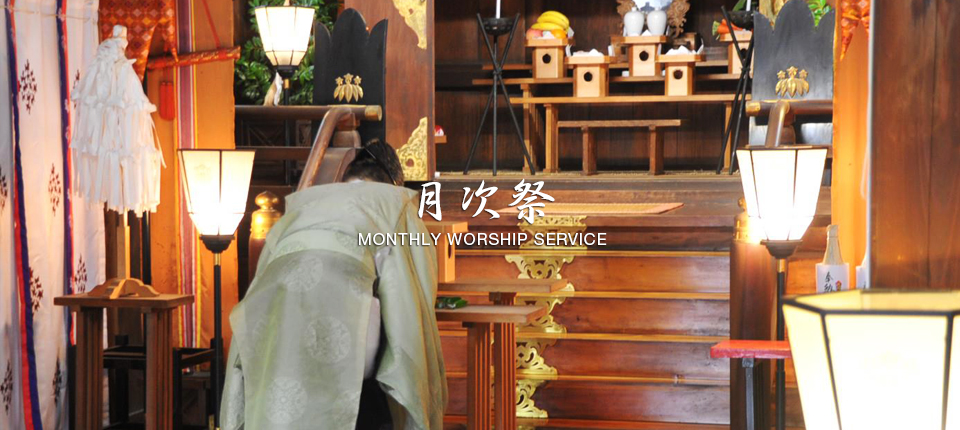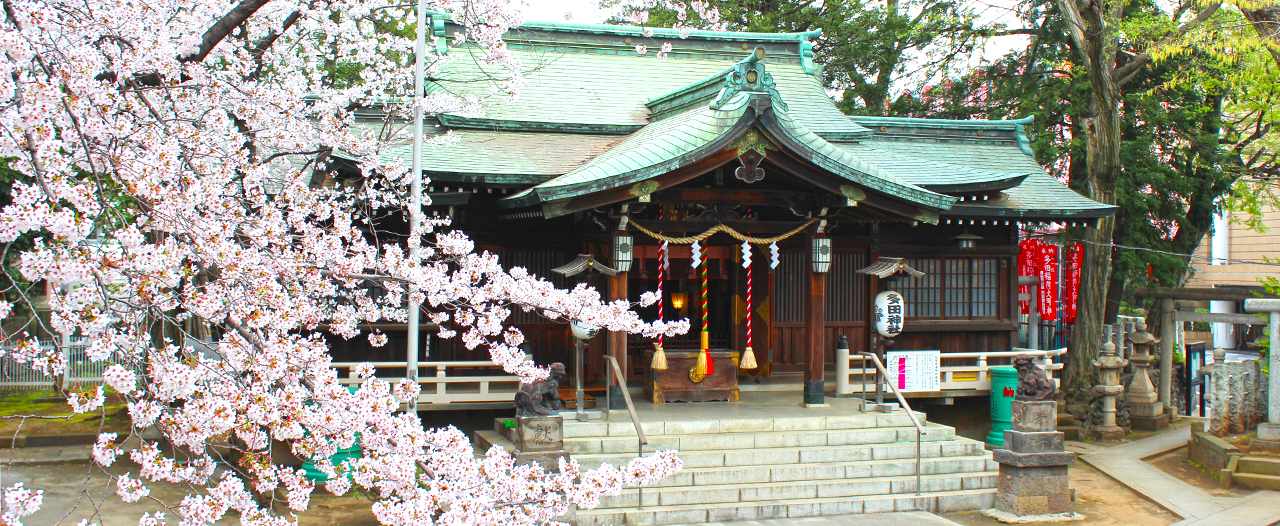
3-43-1 Minamidai, Nakano-ku, Tokyo 164-0014
TEL:+81-3-3381-4376
FAX:+81-3-3229-4214

Tada Shrine was established in 1092 by Yoshiie Minamoto. The God (Kami) of the Shrine is Mitsunaka Tada (912-987 A.D), who was historically one of the famous Shōguns during the Heian Period. In Shinto, great people can be considered Kami (gods) and enshrined after their passing. Mitsunaka Tada was furthermore the great-grandson of Emperor Seiwa. Mitsunaka Tada was famous for his intelligence, particularly when it came to battle strategy, as well as his martial arts ability. He won many battles during his time. Moreover, he is accredited for having translated many books on military tactics from the original Chinese versions.
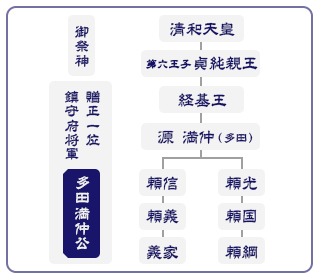
Nowadays, many people come to Tada Shrine in order to pray for good health, as well as success in school and in business. This shrine is famous for such petitions.

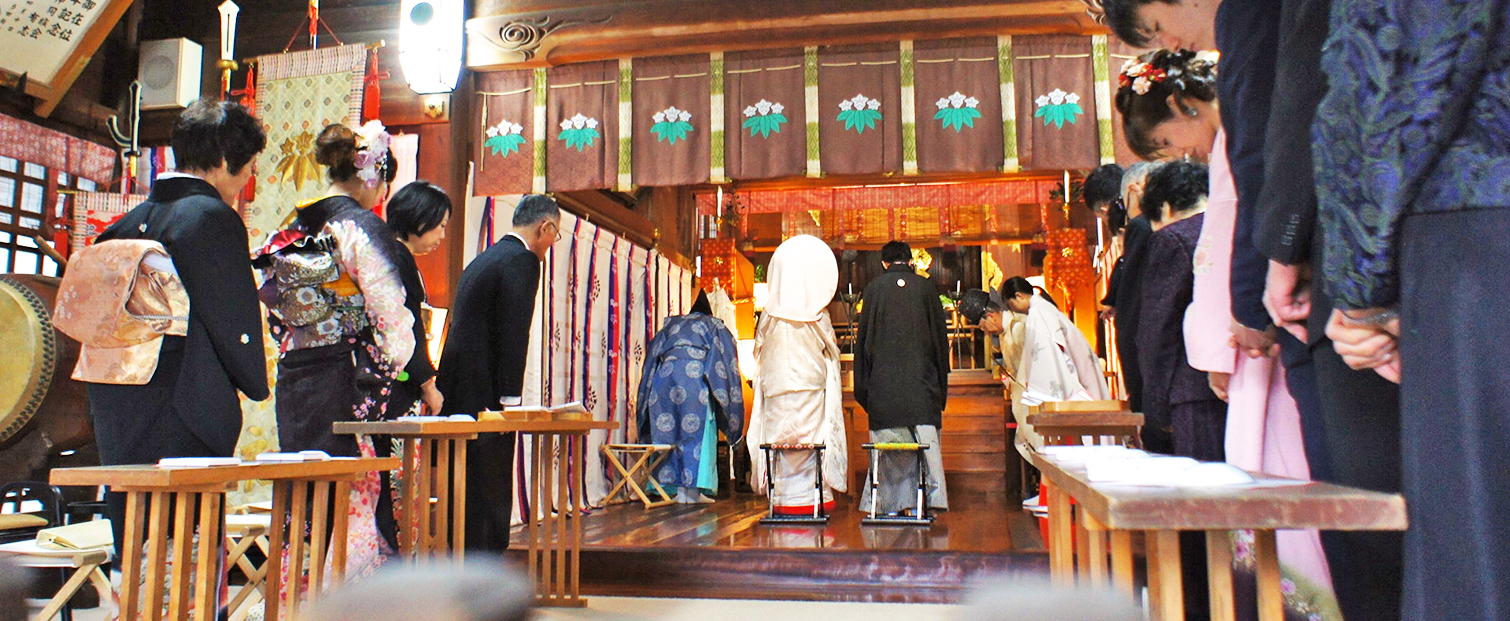
Omamori (mamori means “to protect”)
Sacred protective amulets
We have specific Omamori (amulet) for different purposes, such as general protection, education, traffic safety, business success, child birth and others.
They are often carried in pockets, or attached to purses, on brief cases, or backpacks.
-
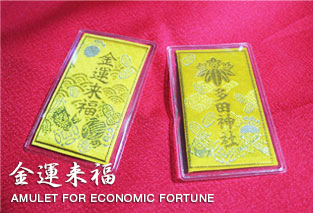
“Kin Un Rai Fuku”
Omamori
amulets for economic fortune
-
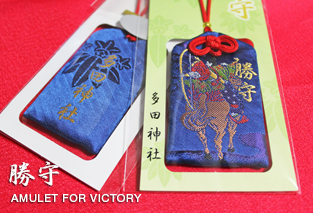
“Kachi mamori”
Omamori
amulets for victory
-
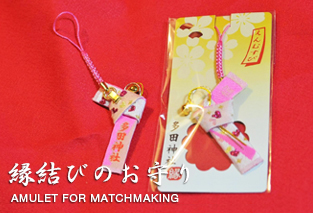
“En Musubi”
amulets for matchmaking
-
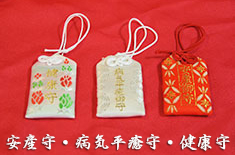
For Child Birth Charm
For Recovery From Illness
For Good Health
-
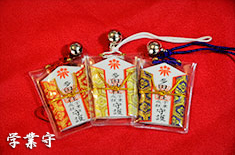
For Education
-
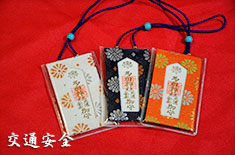
For Traffic Safety
-
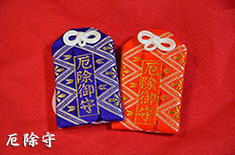
For Good Luck
-
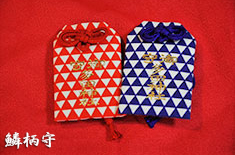
For General Protection
-
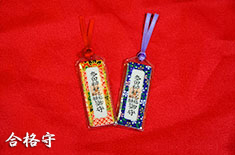
For Examination Pass
-
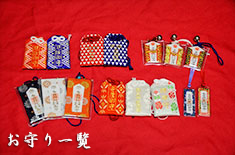
Omamori
-
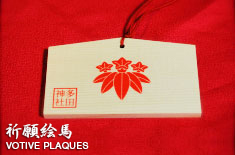
Kigan Ema
votive plaques
People write their wishes on these wooden plaques and hang them on the display board to express their deepest prayers and wishes.

August 27th is the anniversary of Mitsunaka Tada's death. In Shinto, great people can be considered KAMI(gods)and enshrined after their passing.

Frequently Asked Questions.
If you have any questions, please FEEL FREE TO contact us.
Actually, that is a difficult question to answer. Shinto is the indigenous faith of the Japanese people. In general, Shinto is more than a religion and encompasses the ideas, attitudes, and ways of doing things that have become an integral part of the Japanese people over more than 2000 years.
Unlike most religions of the world, Shinto has no text, and no founding father figures. Besides outstanding human beings that become gods after death, nature is also considered to be divine. This includes the flora, fauna and geographic landmarks that we are surrounded by.
It is for personal Purification.
Prior to approaching the Shinto Shrine, you will find a spring water tub to clean your hands and your mouth. This is in order to ritually purify oneself before praying to the Kami.

Scoop one measure of water from the spring with the ladle.

With the water, wash your left hand.

Then, wash your right hand.
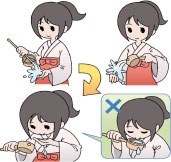

Make a cup with your left hand and pour some of the water into it. Then, sip from your left hand and wash out your mouth.

Using the remaining water, wash the handle of the ladle by letting the water flow down over the handle being held upright.

Return the ladle to its original place.
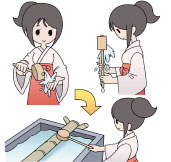

Approach the altar and bow twice

Clap your hands twice.

Say your prayer silently.

Bow once again.
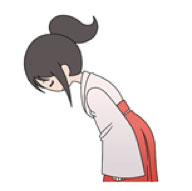

7 minutes walk from
Marunouchi Line Honancho station
17 minutes walk from
Sasazuka Station on the Keio Line.
Shinjuku St. West Exit, No.17 Bus Stop
Eifukucho bound 5-minute walk from Minamidai Toshokan
Koseikai seidomae bound 5-minute walk from Minamidai Toshokan
Nakano St. South Exit No.1 Bus Stop
Shibuya Station south exit (via HATAGAYA) bound 7 minutes walk from Minamidai 3-chome
West Exit of Shinjuku Station bound 7 minutes walk from Minamidai 3-chome











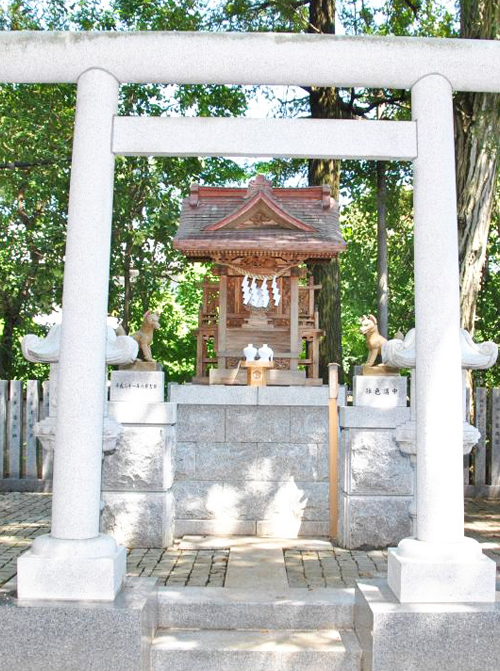
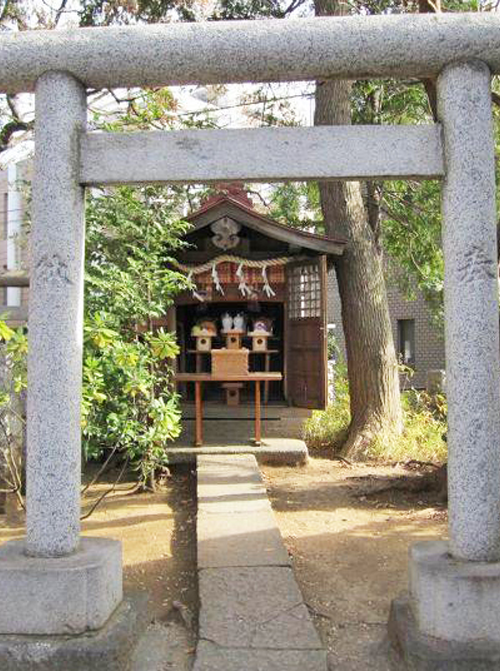
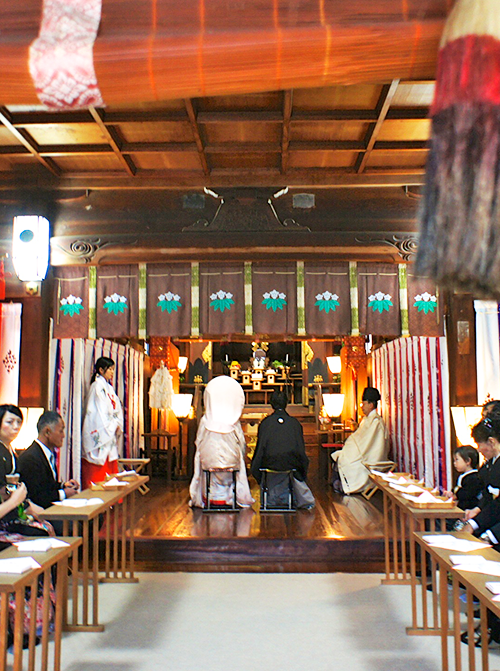
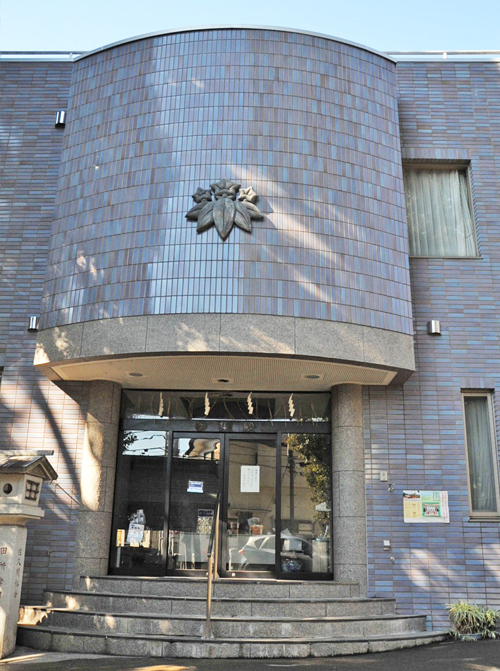
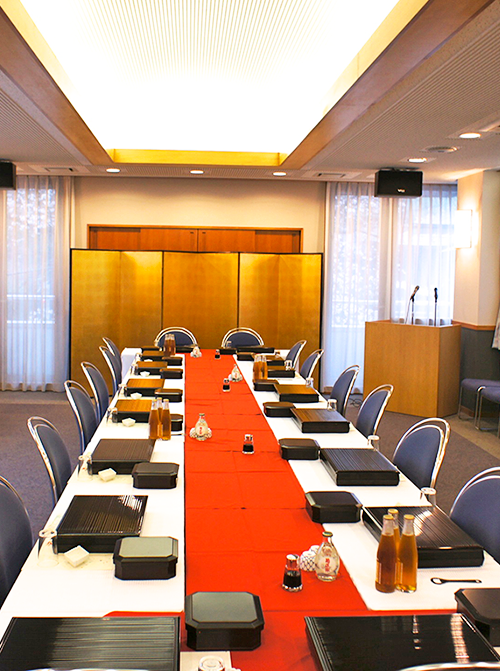

![[1階]和室](img/facility/facility_big07.png)
